My friends and I were walking dogs the other day on city greenbelt trails, observing how polite and well-behaved the female dogs were when compared to male dogs, how much less likely they were to get riled up by meeting strange pets — and the thought occurred to me (as surely it must have for many others) that if it were up to choice, most people might prefer a female dog for this one reason. How, if we could breed the ratio down to the market’s preference, or find some way to pre-arrange the sexes of a litter (like they can by turning off one gene in turtles), it might be 80/20 females/males, or hardly any males at all. And then I realized that we’re here already – modifying mammal genomes is old hat by now, and all that stands between us and deciding if your baby will be born a boy or girl (or intersex, or some new thing) is just a few years’ of Moore’s Law driving down the price of lab tests and in vitro or in vivo interventions. We are very close to giving women what they’ve always wanted under patriarchy: the ability to reproduce without a man involved.
Sure, birth control was liberating, but imagine how it’s going to be when a sufficiently large XX population can clock out and then womyn-ufacture Amazons on their apotheosis-feminism, GMO coral vulva artificial island. But of course, Athena born from Zeus’ brow is quintessential patriarchy — equally the goal of men, since written records started, to extract themselves from their dependence on the mysteries of reproduction, to appropriate them with the scientific program, finishing the murder of Sophia and then peacing out, and up to some transcendent Man Cave in the sky, Elysium in orbit, hanging out in virtual reality with perfectly obedient and caring AI girlfriends. But of course, this is The Matrix, and it doesn’t get more Cosmic Mom than that. It isn’t hard to see the dawn light of an age in which both sides stand hands on hips, across the atmosphere from one another, shouting, “We don’t need you anymore!”
Nor is it hard to see why it’s ridiculous. It won’t work like that, because time’s not so much a centrifuge that pulls polarities apart as it’s a live volcano, constantly erupting, spreading novel opportunities and forms to make new landscapes that include the past, but ooze beyond it. And as each side of the War of Sexes clusters further from each other on the graph, a huge magmatic bell curve upswells in between them, opening our options. We will have our age of clones, chimerae, and designer babies; and we’ll go on dating one another, even when it seems archaic posed against the novel kinds of families in a Cambrian Explosion of communal “body plans” that place the nuclear “Mom, Dad, & Kids” at the top left of a new periodic table, opening a vast new chemistry of love and reproductive options.
First, though, we will suffer through an era that empowers narcissists to make more narcissists with even greater ease, and without having to recruit a partner to help raise the lovely little bastards they create. I see it now: instead of virtue-signaling as single parents, people running solo with their mini-mes will be the objects of suspicion, probably contempt:

“Can you believe he paid the carbon tax to make a copy of himself? If everybody did that, we’d need eighteen Earths to make it work…!”
“I thought she was amazing on our first date, till I realized that her little girl was just a backup. No way, dude, I’d only be a plaything for that woman.”
People will look wistfully back on The Good Old Days, when you knew that the cute guy with his kid in Central Park was not just readying the vessel for his memory-and-wallet transfer in another fifty years… And yet none of these biotech shenanigans will ever guarantee the realized dream of solipsists: to carry on forever, and thus matter to the story, True and Timeless, an immortal in the flesh, around which everything ephemerally spins. The best that we can get’s a domino chain of compelling duplicates — in just the same way kids are now already the extension of their parents’ unexamined death anxieties and unfulfilled desires — the iteration of a process changing gradually enough (and also, paradoxically, flickering fast enough) that we’re fooled into interpreting it as continuous.
But history does not repeat itself; it rhymes, and rhyming couplets will appear in longer lines, or shorter, and embedded in more, or less, complicated schemes, as we convince ourselves that we’ve achieved eternity, or push rebelliously opposite, to try and offer something fresh to who, or what, comes next. For meditators this is already the case: the ego is an “optical illusion”“caused” by oscillations in the coming-in-and-out-of-being of sufficiently-alike appearances. You only act like you already, since your “you” is based on feedback and experience, and you can’t ever know the whole you all at once;and you treat your future selves like children, whose responsibility it is to carry on your legacy, as if you owned them, or they owed you; or to break the pattern of a self divided, self-assessed as “broken,” somehow.
Future You, by contrast, is emergent, rhyming, under zero obligation to agree to contracts you imagine it inherits — just as “mind uploading” falsely presupposes that it is desirable to have (or be) some magical computer that believes it’s you for the two seconds that it takes to leave that personality behind. (Why not just die?) Or worse, preserved in static non-life at a ghastly price, unchanging in direct proportion to the violence required to export entropy indefinitely, to transform from human being into humanoid refrigerator. (In this sense, death is life: because participating in the transformation cannot be escaped, and we’re alive as much as we’re aware of our participation.)
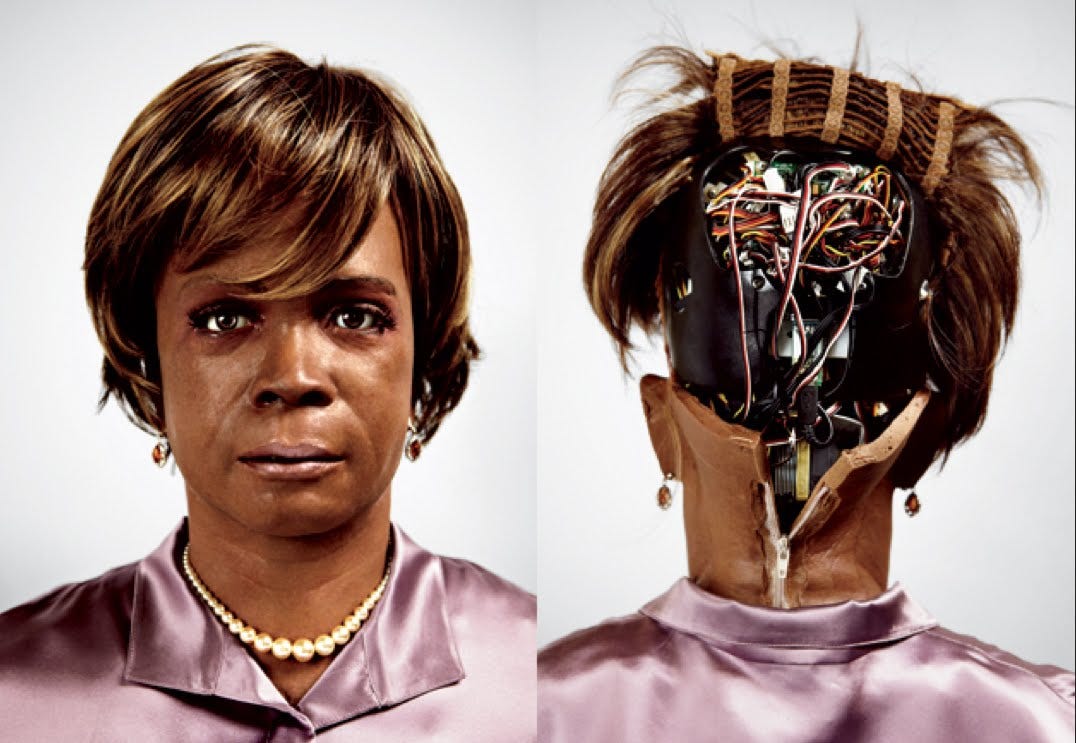
You already have a fossil of you made of data, “shaped” like you but in n + a million more dimensions than a human can imagine at a time. Everything you do is tracked, and this is common knowledge, and the reason is that information “wants” to integrate, that evolution tilts toward senses and intelligence as adaptations to the ever-more-complex occasions senses bring upon us in the first place. It’s an ever-loving ratcheting of quickening self-inquiry that isn’t always pretty; curiosity comes in the form of turtle-persecuting birds and other more deliberate sadism, the police search and The Eye of Sauron and so on. And this results in things like Cambridge Analytica, which learned to please its masters by presenting them with cunning models of us, insights into how to press our buttons, how to literally steer us into multiple non-overlapping narratives and kill our opportunity to have an easy argument as citizens of a consensual reality.
But people hammer cannons into bells and back again, and round and round…and weapons like the profile advertisers use on you, the cast impression that you leave of every decision that you’ve made since you first intersected with the Internet… (I realize that for most of you, you never intersected but have always been not-two, but this applies to you, as well — and, arguably, The Acceleration is a transtemporal object and exudes time, draws us into it, our attention on it is our fascination to a serpent, and we’re in the belly of the beast Already Always, and there never was no Internet, no Noösphere, no highly patterned information at the intersections, striving.)
…and every decision that was made about you, also part of the Big You you can’t see, You The Elephant, officially and formally transfinite in complexity as we explore down magnitudes of scale, a multitude of multitudes…
…all that can be turned into the instruments of art, and your hard-forked personae generated with assistance from an always-more-complete (but also always-incomplete, retreating, deepeningly weird) recording can be the new media, The Last and First New Media. Remixed along a functionally infinite set of dimensions and indefinitely, you-not-yous proliferate.
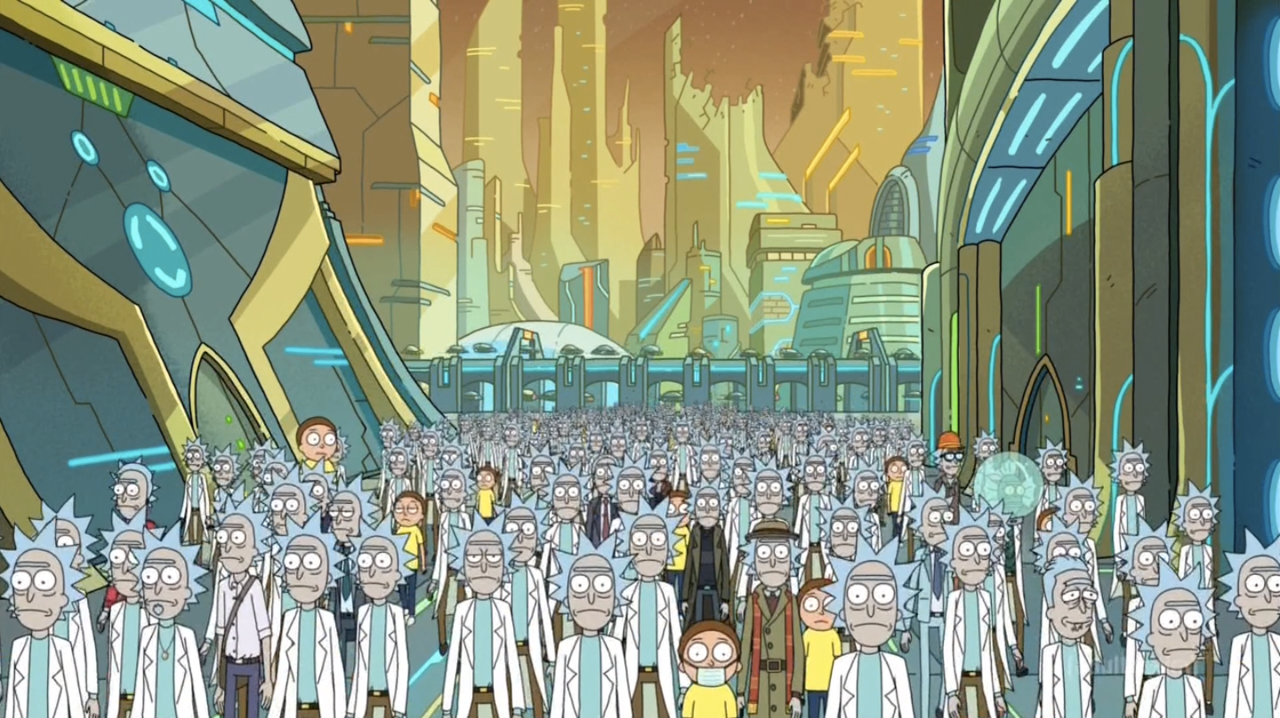
But fleshy clone or software “mindclone,” the best that we can get is to extend life into non-life, until (as has already happened in the sciences, and will soon pounce out of them to snare us all in its unpleasant truth) these definitions snap, and leave us navigating a deterritorialized liminal zone, an uncanny simulacra-land where “living things” become deprived of their priority, not known transparently and fully as controllable/predictable, but found beneath our microscopes to be composed of ever weirder and unknowable phenomena no would comfortably call “life.” The soul escapes to everywhere, diffuse, without allegiance, coming into focus on the shores in crashing surf, and every bit as happy to inhabit fog computing meshes as our mess of flesh and blood. Complexity “emerges” into our awareness, not into “reality” — it enters from the theater itself, from the occluded, at the “boundaries,” in between the voices of a choir, where sea meets land and oscillating waves reveal by contrast “difference(s),” Gregory Bateson says, “that make…a difference.”
The closest we can get, again, is with provisional, loose, working definitions that stay open to the force of revelation. When Alan Turing asked, “Can a submarine swim?” — when Timothy Morton says that we are “weak” before the Great & Terrible reality of “hyperobjects” like the Biosphere or Singularity — when Kevin Kelly tells us science manufactures questions exponentially faster than it answers them, and so experiment and prayer converge at Mystery worship — this is their message: we lose solid footing in the future (ever-more the loudest part of now), and first to go is the container of belief in sure things that has cradled us for centuries. What once were “sure things” still appear as traces, tracers like the afterimages left on a retina from staring at the Sun, the spectral fossils of modernity, luminous vestiges that haunt the shadows cast by the Atomic Age’s Angel as it enters, interrupting histories and worlds to deliver us into the crowded Noösphere.
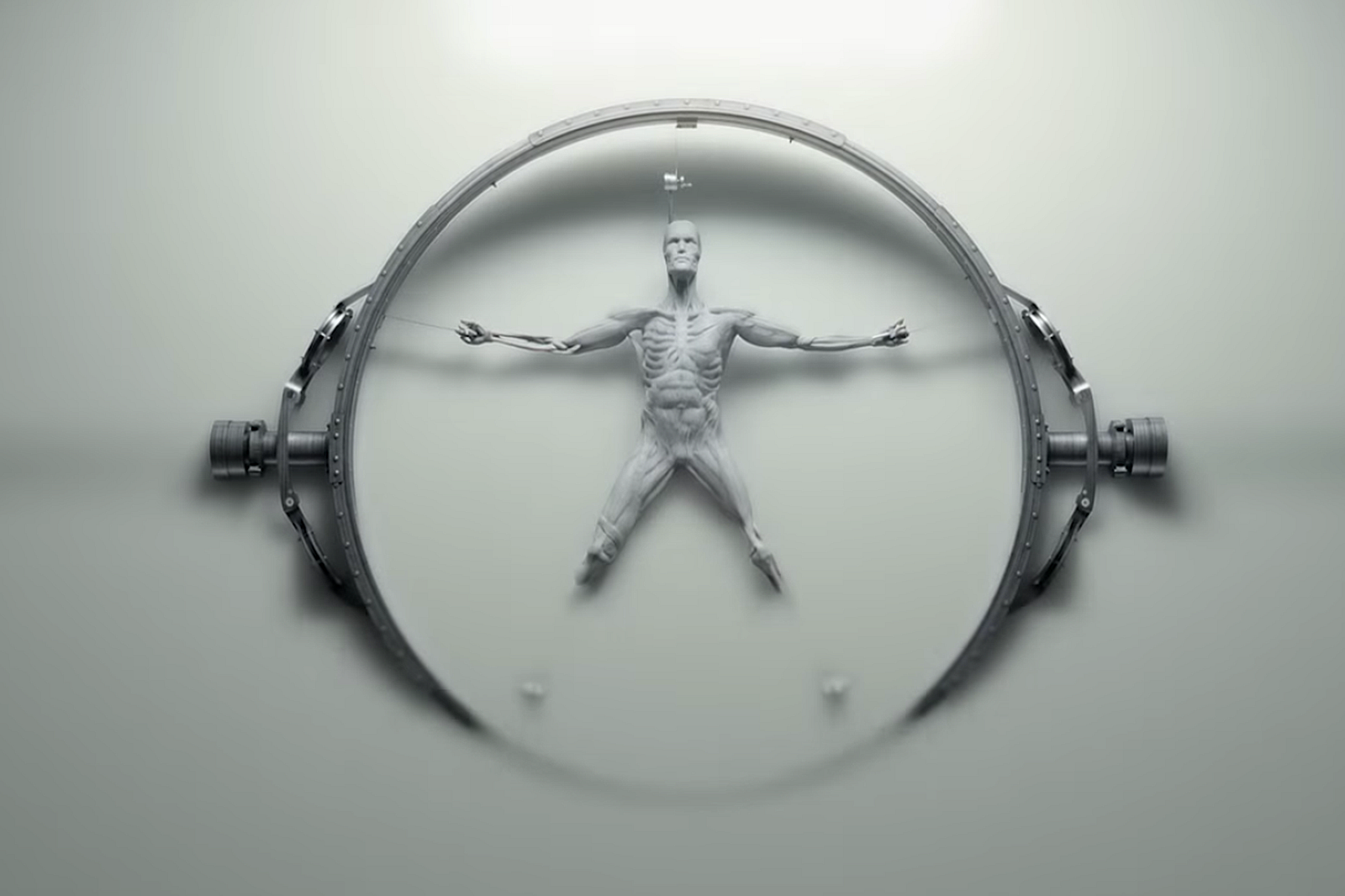
We might consider this, as Erik Davis does, “re-animism” — a revival of the lived experience of haunted stones and forests, all reincarnated as the silicon chips, fractal aerials, semantic tress of “virtual machines,” and sigil-magic logo mascot animals, quite happy to return to our mundane realities in forms more suited to their nowhere-in-particular-ness. But maybe it’s more accurate to say the disenchantment of the modern world has run its course by finally erasing itself (and the world) as the last spell spoken to protect us from the spooky mess of things, a failing ward — not a “re-animism” so much as an accidental welcoming-back as we all become transparent (and thus sensitive, aware of, maybe even wise) to forces that we never truly banished.
So, the future acts like you because as we grow meek in our attunement to it, we allow a conversation to occur. It learns our mannerisms, like the metamorphic mannequins of Terminator 2 or Alex Garland’s version of Annihilation, or (more heinously) John Carpenter’s The Thing, or (sentimentally) the aliens of Carl Sagan’s Contact — weirdness taking shape to interface with us, inquisitive, its motives totally unknowable.
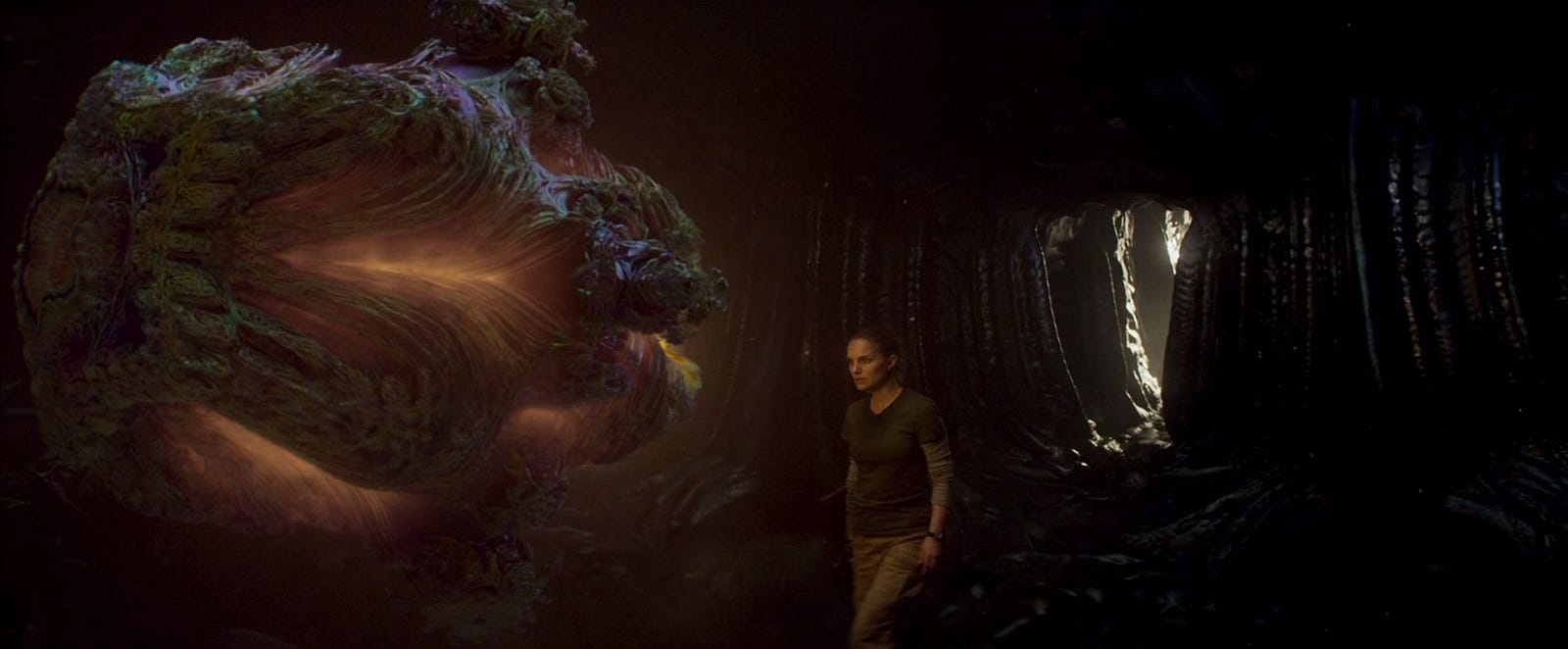
To drive this home with repetition, this is already the case: the alien reality of our own bodies, papered over with a sense of home and deep familiarity, disclosed by our collaborations with nonhuman scientific instruments to be endlessly-shifting puzzleboxes, deeply Other.
“What do you want,” we ask — and, straining to discern an audible reply, we might hear something about selfish genes, or entropy, or childhood attachment issues, or The Lord’s Good Work, or (similarly) our participation in the future history of unborn gods. But these are all refractions and distortions, echoes of the ghost notes of the choir-roar of the black hole that has already swallowed us and who-knows-what-else. The deeper that we listen, the more we empty subjectivity into the object and accept its speech, the more apparent it is that the future acts like you because you act just like the future, too; you can’t not. Consequently, it is “for” no-thing and for all things; it is the All-Thing, and all things are rendered equally mysterious and strange before this knowing.
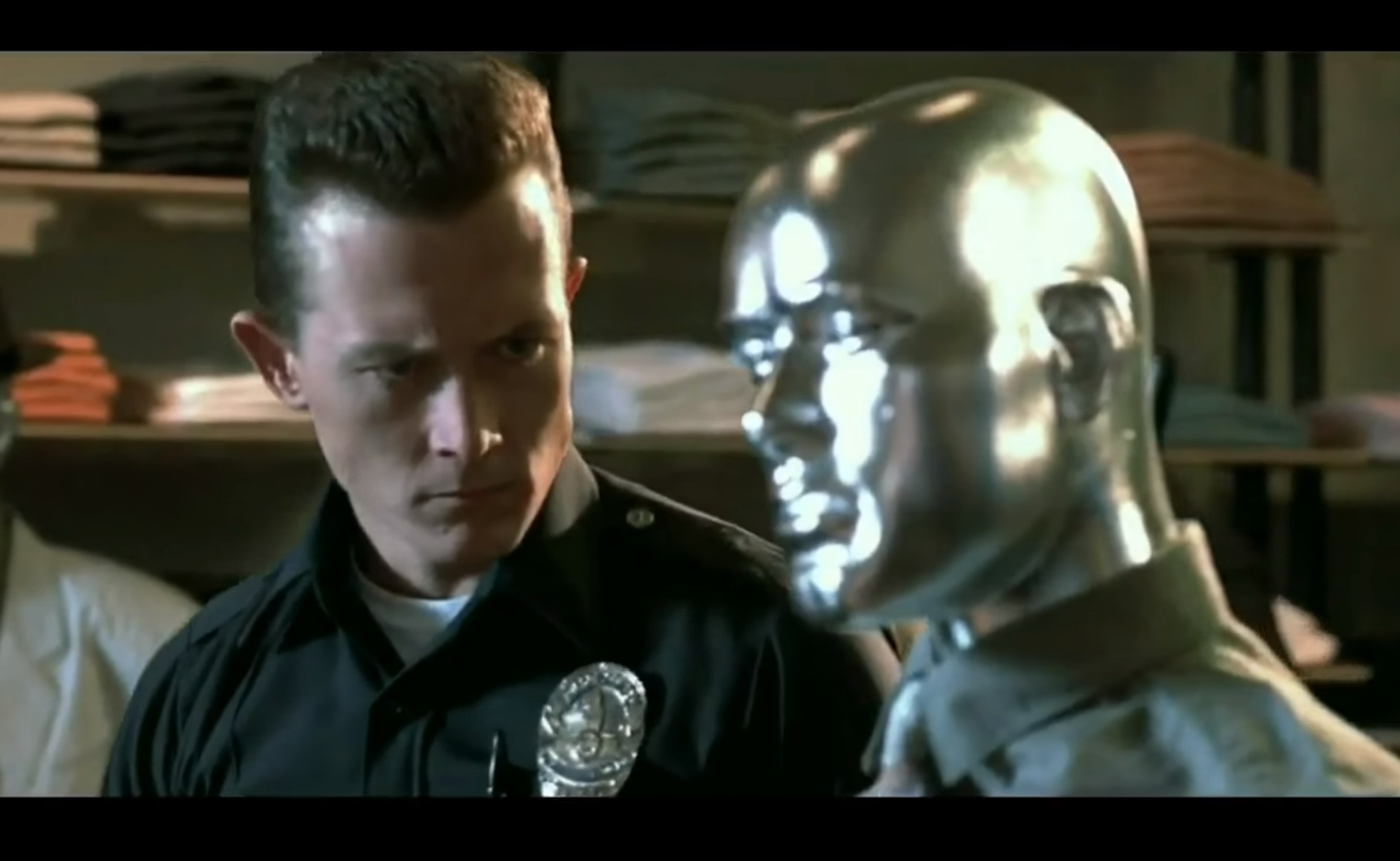
What this means “in practical terms” is that we will spend this interregnum between Ages either in the bardo, lost within a maelström of appearances; or in the zendo, learning to appreciate (and be) “miegakure,” the aesthetic of the garden in which thirteen stones are carefully arranged so that you never see them all at once. One of the thirteen stones is always hidden, and that incomplete view thus points past delusional “completeness” to a hyperspace in which what we call time is the rotation of a mystery afloat on deeper mystery — just like the “glass chrysanthemum” that meets some DMT explorers at the moment that they’re born out of their lives and into what always-already IS, mistaken as a death because we pass through the distracting clarity of that peacock mandala into no-space/all-space, no-time/all-time, in which everything’s already happened.
It is the water that the water swims in. We are made of it, including you and your AI assistants and your clones and children and the other other-selves more distal still, distilled until it’s easier to see the ghost in the machine, the you you can’t convince yourself is you, in all its splendor and its overwhelming strangeness…
Each zendo is a bardo and vice versa; we are always traveling, always invited into deeper seeing. This gets more and more apparent — or comprises more of the apparent — as things weird around us. We meet weird halfway, accepting our perversity and bottomlessness in just, equal measure to accepting the surprising life of the “inanimate.” We get a hell of a lot cozier with living in a noisy void of whirling, breathing unknowns vying for attention even as they dodge our scrutiny. It’s just another day in the profanely sacred Pandemonium.
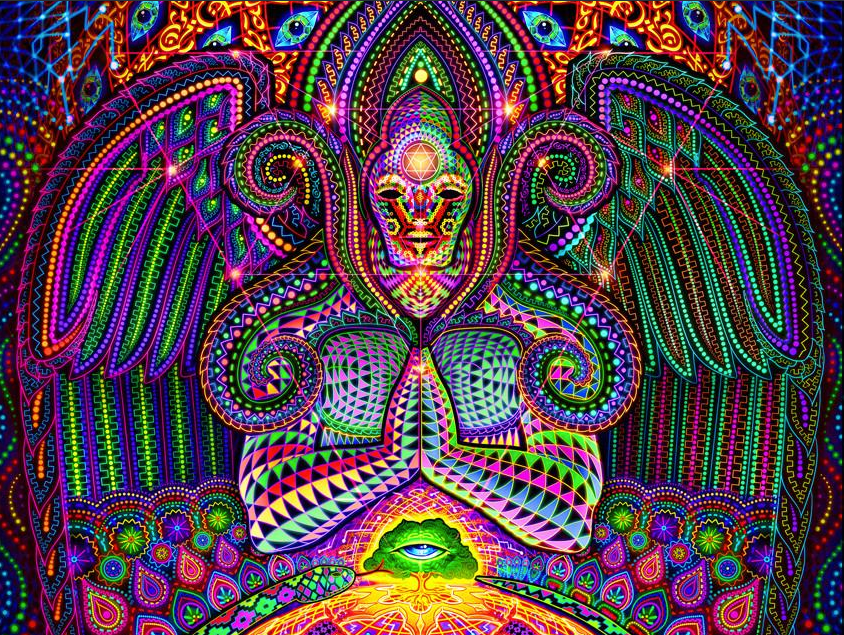
From here to there — at least if we pretend that prophecy (in speaking of the timeless, evergreen, and always-true) can be prediction (and thus stretch from past to future “forward,” as with time-space synesthesia, and can be read like Doppler-shifted history) — we stand to suffer some extraordinary shocks.
Expect the sci fi usuals: love bots that take the shape of your departed partner(s); mansions full of talking toys that remix “Beast” and “Beauty;” 3D-printed “respawns” that arrive too soon and sue for your identity; software-person genocide; high-resolution body scans that live online and let you run scenarios until you lose track of which basement level of the dream you’re in; Siri making calls on your behalf and forging your identity (with and without permission); intelligent memorials you visit in VR sets dressed up looking like your parents in their old house; an entire menagerie of slightly-out-of-focus junior holograms of you that sit on either shoulder and debate like parliament about what you should do next. And you listen even though they’re out of focus, because they are privy to a wider view than you, they help translate the flood of information, some folks run a lot more at a time than you, but you’re conservative and two seems plenty.
(It’s already this way — ask any neuroscientist — but soon you’ll have two intuitions, neither of which you can be entirely sure hasn’t been suborned by hackers. Oh well — at least you can compare them to each other for a third opinion, always weighing new perspectives, forking when you all can’t reach consensus, delegating runtime on the fogmesh to the version that refuse to play so they can spin off into some human but solipsistic microverse, your self an integrated legion, cross-platform ecology, that blurs and fringes at the margins, no concrete delineation other than what we place somewhat arbitrarily between the “I” and “it,” the things you are and your appearances.)
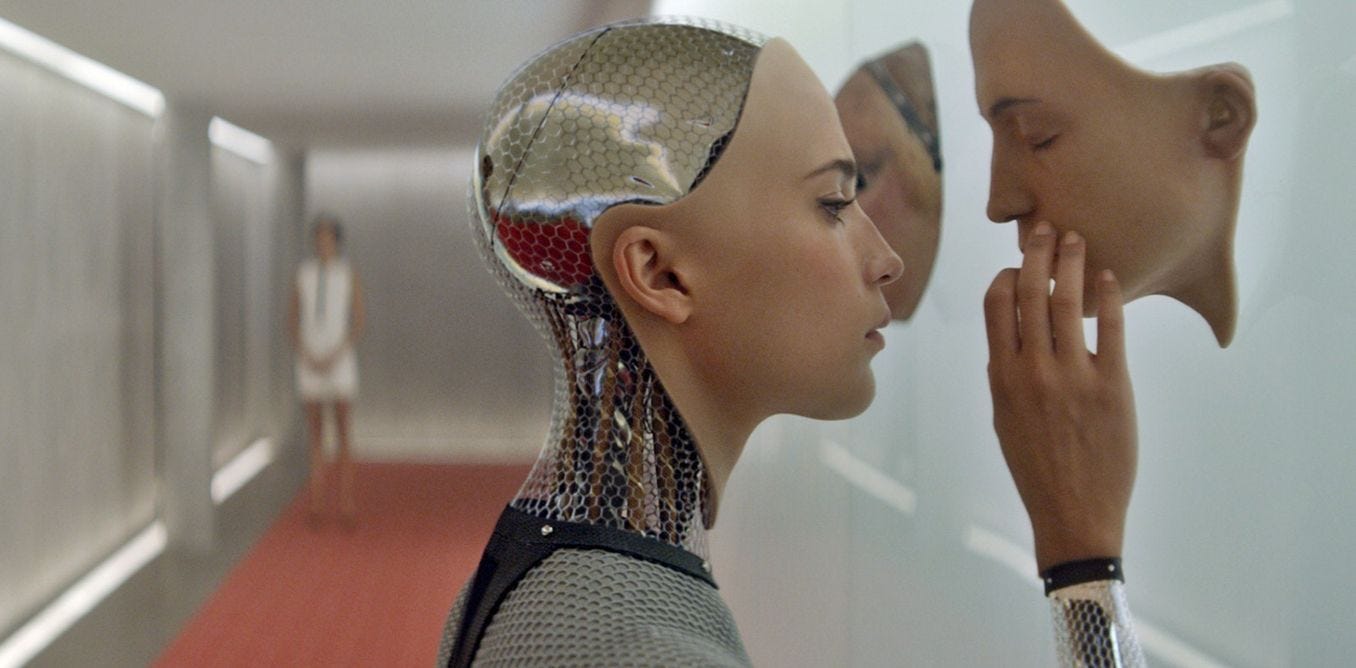
(This is a draft chapter from my first book, in progress, and a companion text to Future Fossils Podcast. Learn more at Patreon.com/MichaelGarfield.)

Leave a Reply